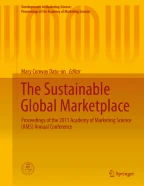
Over the past few decades, bargain shopping has become a popular shopping type among American consumers. Shopping for luxury goods is not an exception to the bargain shopping concept. Deep-discounted luxury items are sold in online stores, factory outlet malls, and upscale department outlet stores and luxury retailers are undertaking their off-price operations with aggressive expansion plans of launching outlet stores. This phenomenon can be epitomized by the term “massclusivity–exclusivity for mass” of luxury (Koval 2005), representing accessible and affordable luxury for mass consumers. Although previous research on consumption behavior of luxury brands has focused on symbolic meanings and emotional values of luxury possession, there is no research framework that captures the nature of consumers’ luxury consumption behavior in today’s value-oriented environment. With an attempt to describe the aforementioned phenomenon, this study introduces a new term, “Luxe-Bargain Shopping,” which is defined as “purchasing a luxury brand at a bargain, which generates values in association with both the product (luxury brand) and process (bargain shopping),” and examines the relationships among consumers’ perceived values, satisfaction, and future purchase intentions in the context of Luxe-Bargin Shopping. The relationship among perceived values, satisfaction, and future purchase intentions can be established by the conceptual framework of Cognition-Affect-Behavioral Intention. This study distinguishes perceived values associated with bargain process from the perceived values derived from the luxury consumption. Snob and Bandwagon effect (Leibenstein 1950), Multi-dimensional perceived value (Sweeney and Soutar 2001), and Transaction Utility Theory (Thaler 1983) were employed to explore the two sources of perceived values in Luxe-Bargain Shopping.
Chapter © 2016
Chapter © 2017
Chapter © 2022
These keywords were added by machine and not by the authors. This process is experimental and the keywords may be updated as the learning algorithm improves.
You can also search for this author in PubMed Google Scholar